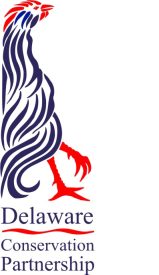About Delaware’s Conservation Districts
Across the United States, nearly 3000 conservation districts — almost one in every county — are helping local people to conserve land, water, forests, wildlife and related natural resources. Their mission: to coordinate assistance from all available sources — public and private, local, state and federal — in an effort to develop locally driven solutions to natural resource concerns.
Conservation districts help:
- implement farm conservation practices to keep soil in the fields and out of waterways;
- conserve and restore wetlands, which purify water and provide habitat for birds, fish and numerous other animals.
- protect groundwater resources;
- plant trees and other land cover to hold soil in place, clean the air, provide cover for wildlife and beautify neighborhoods;
- help developers and homeowners manage the land in an environmentally sensitive manner; and
- reach out to communities and schools to teach the value of natural resources and encourage conservation efforts.
Delaware’s Conservation Districts are made up of cooperators that are landowners, rural and urban, who join together voluntarily within the district in planning for and controlling soil erosion, sedimentation, flooding, and managing animal wastes, fertilizers, and agricultural chemicals to protect farmland and water quality.
Delaware’s Conservation Partnership

Districts function under the supervision of the district board of supervisors who receive the guidance of the Delaware Department of Natural Resources and Environmental Control (DNREC) – Division of Watershed Stewardship as provided by the Delaware Code. Districts are usually funded through a variety of sources including federal, state, and county appropriations, grants, fees for special services, and contributions from local sources. All income is used to promote conservation of our natural resources.
District offices illustrate the unique three-way partnership which enables districts to function. The personnel that provides services to district cooperators are usually a mixture of federal, state and district employees, all working together toward one common goal. They share office space and perform their duties as a team. The team is usually made up of USDA – Natural Resources Conservation Service (NRCS), DNREC, and the Conservation District employees funded by local, state, and/or federal government.
History of the Conservation Districts
“The nation that destroys its soil destroys itself.”
Franklin D. Roosevelt, in a 1935 letter to state governors to encourage them to establish soil conservation districts. Click here to read the full letter.
In 1929, the United States Congress appropriated about $160,000 for erosion control experiments. The work of research centers established with these funds expanded as the economic disaster of the dust bowl in the Midwest became a cause for national concern.
The Soil Erosion Service (SES) of the U.S. Department of the Interior was created as a temporary organization in 1933. Its purpose was to demonstrate the values of soil and water conservation by placing conservation measures on farms in cooperation with landowners. In addition, the federally-created Civilian Conservation Corps (CCC) was assigned to aid in erosion control work across the country. Two years later, in 1935, Congress established a definite federal policy concerning soil conservation. The CCC’s were active in Delaware.

By an Act of Congress on April 27, 1935, the personnel and resources of the Soil Erosion Service were transferred to Soil Conservation as part of the U.S. Department of Agriculture. This was the first step in creating a local voluntary system around a core of federal expertise and support.
On February 27, 1937, President Franklin D. Roosevelt sent a letter to all state governors recommending enactment of soil conservation district legislation. The proposed act suggested establishing districts to direct and manage soil erosion control programs using local citizens participating voluntarily in planning and installing conservation practices. Each district so designated would be empowered to determine local needs, would have personal contact with local individual landowners within the community, and would thus be able to encourage maximum cooperation on a voluntary basis.
The first soil conservation district in the United States was organized on August 4, 1937, in North Carolina. Kent County became the first conservation district formed in Delaware, on October 6, 1943. Sussex County was formed on February 16, 1944 and New Castle County was formed on August 9, 1944. Today, all 50 states, Puerto Rico, and the Virgin Islands have passed the enabling legislation necessary for the creation of approximately 3,000 local districts.
Delaware’s enabling act was passed on April 12, 1943. The Act created the Soil Conservation Commission to determine the need for districts, define their boundaries, conduct election of the first Boards of Supervisors and assure that district programs conformed to legislative intent. The functions of the Commission were transferred to the Division of Soil and Water Conservation when State Government was reorganized in 1969 and the Department of Natural Resources and Environmental Control was created.
About DACD
The Delaware Association of Conservation Districts works with the districts and our partners to address soil and water issues statewide. DACD promotes voluntary, locally-led conservation and supports the role of the Districts in enhancing the productivity of land, protecting our public infrastructure and improving the quality of life for all Delawareans.
DACD sponsors the Annual Governors Conservation Award and the Delaware Envirothon. DACD also provides support to the districts on legislative issues at the state and national level, and holds executive meetings to discuss and coordinate district programs, review USDA programs and partnership objectives.
